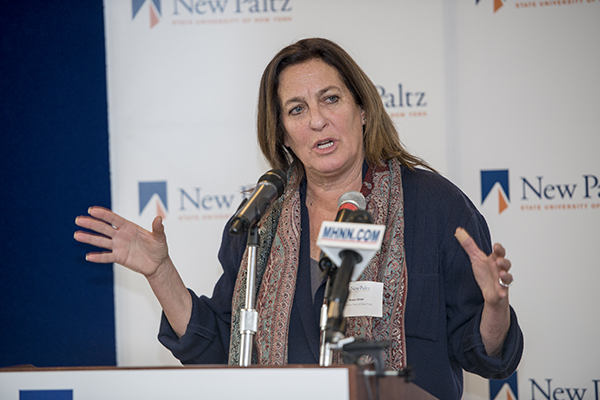

The New Paltz Town Board recently passed a resolution against a Federal Energy Regulatory Commission (F.E.R.C.) decision allowing the state’s power grid operator, the New York Independent System Operator (N.Y.I.S.O.), to create a new energy capacity zone in the Lower Hudson Valley, set to go into effect May 1.
The purpose of the creation of a zone is to “maintain system reliability and attract investments in new and existing generation and demand response resources,” essentially drawing in new investments for additional power plants, according to a Reuters article.
However, the zone would cause a spike in electric prices, raising them three to 10 percent and potentially increasing electric bills in the Lower Hudson Valley by $350 million a year, the article reports.
The capacity markets pay generators to help keep existing power plants in service and create new units to maintain the system reliability. Demand response providers who agree to reduce power usage when needed can also participate in capacity markets.
On Feb. 20, the New Paltz Town Board passed two resolutions, one opposing the capacity zone and one proposing transmission upgrades. Councilman Dan Torres offered the solutions and then moved for their adoption, seconded by Councilwoman Jean Gallucci. They passed unanimously by all members of the council in attendance.
“Therefore, be it resolved that New Paltz calls upon the Federal Energy Regulatory Commission to postpone indefinitely its order issued August 13, 2013, which conflicts with State efforts currently underway to address the same problem of transmission constraints; and further calls on N.Y. Gov. Andrew Cuomo, U.S. Sen. Charles Schumer and Gillibrand and US. Rep. Gibson to intervene on our behalf to halt the creation of the N.C.Z.,” the first resolution said.
Town Supervisor Susan Zimet said the main take away of the new capacity zones is that the Federal Government will be increasing the cost of electricity to users in the Hudson Valley through two components, the first being the creation of a capacity zone.
Cuomo’s Energy Highway Blueprint is a comprehensive initiative that was issued in 2012 and will infuse New York State’s electric power system with up to 3,200 MW of additional electric generation and transmission capacity and clean power generation, the Reuters article reported.
Demand for electricity is greatest in the southeastern portion of the state, while much of the supply is located to the north and west of the state. During times of peak demand when the weather is very hot or very cold, transmission lines running through the Hudson Valley are unable to carry enough supply from upstate sources to meet downstate sources, creating transmission congestion.
“The main problem with this plan is that the section of existing transmission lines between Greene County and Dutchess County constitutes a bottleneck [congestion] in the transport of power from major generation points further upstate… where demand is highest,” Zimet said.
Four applications are currently under consideration by the Public Service Commission for projects that would upgrade the infrastructure and alleviate the problem, Zimet said, three of which would route the power through Dutchess County’s existing transmission corridor, possibly requiring the construction of additional towers.
“The bulk power transmission projects proposed in response to Gov. Cuomo’s Energy Highway Blueprint initiative will bring lower cost upstate power to the Lower Hudson Valley and New York City region, thereby potentially negating the need for F.E.R.C. to offer financial incentives to build more power plants downstate,” Zimet said.
Citizens for Local Power (C.L.P.) Co-founder Jen Metzger said the group collectively believes the creation of a new capacity zone is costly, unfair and unnecessary.
“It will increase our electricity rates while incentivizing generation by dirty fossil-fueled power plants at a time when we need to invest in distributed renewable generation and more aggressive demand reduction,” she said.
These upgrades are being made in a concerted effort by the state to increase renewables and reduce demand through conservation and energy efficiency and are a far more sensible and sustainable path to take to address the peak demand problem, Metzger said.
Schumer has also spoken out against the capacity zones, and stated that he would be calling the F.E.R.C. Commissioner, asking him to personally hold off on the implementation of this order to give more time for the state and federal government to solve this issue together, Zimet said.
“There are many ways to increase the amount of power we can deliver to the Hudson Valley,” Schumer said in a recent press release. “Our first option shouldn’t be doing it on the backs of consumers. What’s worse, these rate hikes are like a shot in the dark, there is simply no guarantee more power will be created.”
